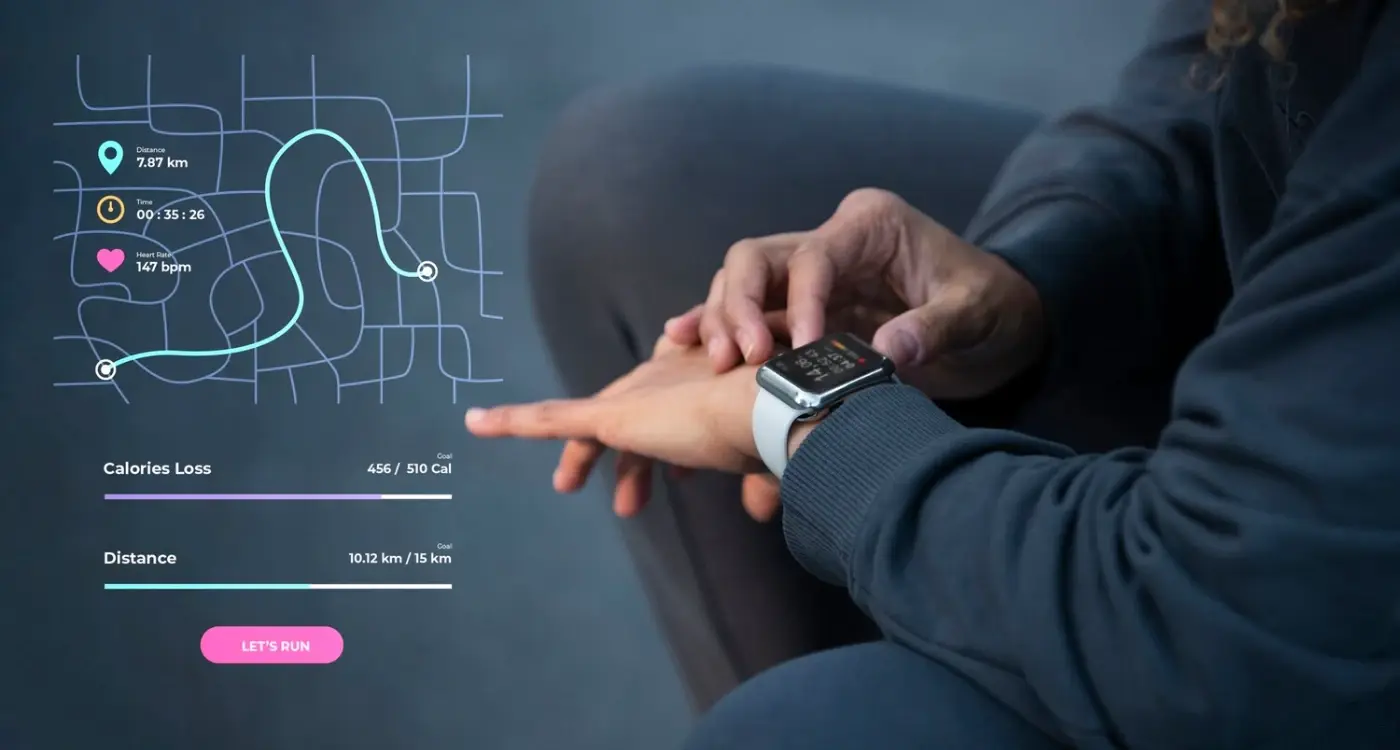How Do You Test if People Want Your App Before Building?
A property development company spent £180,000 building a mobile app that would let users take virtual tours of homes using their phone's camera. They were convinced it would change how people house hunt. The app worked perfectly, looked beautiful, and had all the features they'd dreamed of. But after six months, they had fewer than 200 downloads and almost no active users. Turns out, people preferred looking at professional photos and visiting properties in person—they didn't want to wave their phone around empty rooms. The company could have discovered this for less than £2,000 in market testing before writing a single line of code.
This kind of story isn't rare in the mobile app world; it's actually the norm. I've seen brilliant technical teams build absolutely perfect solutions to problems that don't exist. The harsh reality is that most app failures aren't because of bugs or poor design—they fail because nobody actually wants what they're offering.
Here's the thing though—you can avoid this expensive mistake entirely. App market testing and user validation aren't just fancy terms that consultants throw around to sound clever. They're your safety net, your early warning system, and honestly, they're the difference between building something people will love and building something that sits forgotten on your phone.
The biggest risk isn't building the wrong thing badly, it's building the wrong thing really well
In this guide, we'll walk through exactly how to test if people actually want your app before you spend a penny on development. We'll cover user validation methods that work, mobile app research techniques that give you real insights, and feasibility testing approaches that can save you months of wasted effort. By the end, you'll know whether your app idea has legs—or whether you need to go back to the drawing board.
Why Most Apps Fail Before They Start
I've watched countless app projects crash and burn before they even reached the app store, and honestly? Most failures happen way before anyone writes a single line of code. It's not because the developers were rubbish or the design was ugly—it's because nobody bothered to check if people actually wanted the thing in the first place.
The harsh reality is that most app ideas fail because they're solving problems that don't really exist or they're targeting people who aren't willing to pay for a solution. I see this all the time: someone has what they think is a brilliant idea, gets excited, and jumps straight into development without doing any proper research. Six months and £50,000 later, they're wondering why nobody's downloading their app.
But here's the thing—failure isn't random. There are specific reasons why apps fail before they start, and understanding these can save you a massive headache (and a lot of money).
The Top Reasons Apps Fail From Day One
- Building for a market that doesn't exist or is too small to sustain the business
- Creating solutions for problems people aren't actively looking to solve
- Assuming you know what users want without actually asking them
- Ignoring the competition or thinking you can easily beat established players
- Having no clear monetisation strategy or understanding of user acquisition costs
- Targeting everyone instead of focusing on a specific user group
- Overcomplicating the core functionality from the start
The good news? Every single one of these problems can be spotted and fixed before you spend serious money on development. You just need to know how to test your assumptions properly, which is exactly what we'll cover in the next few chapters.
Understanding Your Target Market
Right, let's talk about something that sounds dead boring but is actually the difference between building an app people love and building one that sits gathering digital dust. Your target market isn't just "everyone with a phone"—trust me, I've heard that one more times than I can count!
When I'm working with clients on app market testing, the first thing we do is get really specific about who exactly will use this app. Not demographics like "women aged 25-35" (though that's a start), but the real stuff. What problems keep these people up? What apps are already on their phone? How do they currently solve the problem your app is trying to fix?
Getting Inside Your Users' Heads
Here's where mobile app research gets interesting. You need to understand the behaviour patterns, not just the surface-level preferences. I always tell clients to spend time where their potential users hang out—whether that's specific Facebook groups, Reddit communities, or industry forums. Listen to what they complain about; watch what they share.
User validation starts with understanding the context of when and why someone would reach for your app. Are they stressed and looking for a quick solution? Are they browsing leisurely? This context shapes everything from your app's design to its core features.
Testing Your Assumptions Early
The beauty of feasibility testing is that you can test your market understanding before writing a single line of code. Create simple surveys, run small Facebook ads to gauge interest, or even just post in relevant online communities asking about the problem your app solves.
Create user personas based on real conversations, not guesswork. Interview at least 10 people who represent your target market before making any major app decisions.
Validating Your App Idea with Real Users
Right, so you think you've got the next big app idea. That's brilliant—but here's the thing, what you think is amazing might not actually solve a real problem for real people. I've seen this countless times over the years; someone gets excited about their idea and jumps straight into development without talking to a single potential user. It's bloody expensive when it goes wrong.
The smartest thing you can do is get out there and talk to people. Not your mates down the pub (they'll tell you its great no matter what), but actual potential users. Start by identifying who would use your app and where you can find them. Are they parents? Business owners? Students? Once you know who they are, you need to find them.
Finding Your Test Users
Social media groups, online forums, local meetups—these are goldmines for finding people willing to chat about their problems. I always tell my clients to join Facebook groups or Reddit communities where their target users hang out. Don't pitch your app straight away though; just listen to what people are complaining about and what they wish existed.
When you do start conversations, ask about their current problems, not your solution. "How do you currently handle X?" is much better than "Would you use an app that does Y?" People will say yes to almost anything when you ask them directly, but their behaviour tells the real story.
What Questions Actually Matter
The magic question is: "What's the most frustrating part of your current process?" Listen carefully to their answers. If multiple people mention the same pain point, you might be onto something. If they seem confused about why this would even be a problem, well... that's valuable information too.
Creating Simple Prototypes and Testing Methods
Right, so you've done your research and you think people actually want your app—but how do you test this without spending months building the real thing? This is where prototypes become your best friend, and I mean proper simple ones, not fancy interactive masterpieces that cost a fortune.
The simplest prototype you can create is what we call a paper prototype. Sounds a bit mad, but it works brilliantly. You literally sketch out your app screens on paper or use basic wireframing tools like Balsamiq or even PowerPoint. I've seen successful apps that started life as hand-drawn sketches tested with potential users in coffee shops. The goal isn't to impress anyone with your design skills; its to see if people understand your app's flow and find it useful.
Digital Prototypes That Don't Break the Bank
Once you've tested your paper version, tools like Figma or Marvel let you create clickable prototypes that feel more like real apps. You can link screens together so users can tap through the main journey of your app. These tools are dead easy to learn—honestly, if you can use PowerPoint, you can figure them out.
The biggest mistake I see is people building prototypes that are too polished. Users get distracted by colours and fonts when what you really need to test is whether your core idea makes sense.
For user validation testing, recruit 5-8 people who match your target audience. Give them specific tasks to complete using your prototype whilst you watch and take notes. Don't help them or explain anything—just observe where they get confused or stuck. This will tell you more about your app's usability than any survey ever could.
Analysing Your Competition and Market Gap
Right, let's talk about something that makes most people uncomfortable—properly studying what your competitors are up to. I mean, nobody likes admitting that their brilliant app idea might already exist in some form, but honestly? That's exactly what we need to figure out.
Here's the thing about competition analysis—its not about copying what everyone else is doing. It's about understanding where the gaps are and what users are actually complaining about. I spend hours reading app store reviews for competing apps, and let me tell you, that's where the real insights are hiding.
What to Look for in Competitor Apps
- Read their one and two-star reviews religiously—users tell you exactly what's missing
- Check their update frequency and changelog notes
- Test their onboarding process and note where you get frustrated
- Look at their pricing models and user acquisition strategies
- Monitor their social media for customer complaints and feature requests
But here's what most people get wrong—they assume that if competition exists, theres no room for them. Actually, competition usually validates that there's a real market need. The question isn't whether competitors exist; it's whether they're doing a good job serving users.
I've seen apps succeed in crowded markets simply because they focused on one specific pain point that everyone else was ignoring. Sometimes the gap isn't a missing feature—it's better design, faster performance, or just treating customers like human beings instead of walking wallets.
Your job is to find where existing solutions are falling short and position your app as the obvious better choice. That's your market gap right there.
Measuring Demand Through Pre-Launch Strategies
Right, so you've done your research and tested your idea with real people. Now comes the big question—will people actually download and use your app when its ready? This is where pre-launch demand testing becomes your best friend, and honestly, its one of the most underused strategies I see.
The beauty of measuring demand before you build is that it costs virtually nothing compared to developing a full app. I mean, we're talking about spending a few hundred pounds on marketing tests versus tens of thousands on development. It's a no-brainer really.
Landing Page Validation
Create a simple landing page that describes your app and asks people to sign up for early access. This is app market testing at its most basic level. If you can't get people excited enough to leave their email address, you've got a problem. Run some targeted ads to drive traffic—Facebook and Google Ads work brilliantly for this kind of user validation.
I typically look for conversion rates between 2-5% depending on the industry. Anything below 1% and I start questioning whether theres real demand there.
Set up different landing page versions to test various value propositions. Sometimes changing one headline can double your sign-up rate and give you insights into what really resonates with users.
Social Media and Community Testing
Join relevant Facebook groups, Reddit communities, and forums where your target users hang out. Share your concept and gauge reactions—but don't be spammy about it. The feedback you get here is often more honest than what friends and family will tell you.
Pre-launch strategies like these give you real data about market demand before you commit to development. Its mobile app research that actually matters because it involves real people making real decisions about whether they want your app.
- Create landing pages with clear value propositions
- Run small-scale advertising campaigns to test interest
- Build email lists of potential early users
- Monitor social media engagement and feedback
- Track conversion rates and user behaviour patterns
Common Testing Mistakes That Cost You Money
I've seen perfectly good app ideas die because founders made expensive testing mistakes. Not the dramatic "burned through a million pounds" kind—though that happens too. I'm talking about the subtle errors that slowly drain your budget while giving you false confidence or, worse, completely wrong information about your market.
The biggest mistake? Testing with the wrong people. You know what I mean—asking your mates, family members, or random strangers who'll never actually use your app. Sure, they might say its a great idea (people are polite like that), but their feedback is essentially worthless. One client spent three months refining features based on feedback from people who weren't even smartphone users. Bloody hell, what a waste.
The Most Expensive Testing Errors
- Building full prototypes instead of simple mockups—you don't need working software to test concepts
- Running surveys without screening participants properly—generic feedback leads to generic apps
- Testing too many features at once—you cant tell which elements actually matter to users
- Ignoring negative feedback because it doesn't match your vision
- Testing in isolation rather than comparing against existing solutions people already use
- Spending money on focus groups when simple user interviews would work better
Here's the thing—good testing doesn't have to be expensive, but bad testing always costs more than you expect. When you test with your actual target market using simple methods, you get honest answers quickly. When you overcomplicate it or test with the wrong crowd, you end up building something nobody wants.
The smartest founders I work with spend more time finding the right people to test with than they do creating elaborate testing setups. Simple questions, real users, honest feedback. That's what saves money.
Conclusion
Right, we've covered a lot of ground here—from understanding why most apps fail before they even get started, to diving deep into user validation and prototype testing. The thing is, none of this has to be complicated or expensive; it just needs to be done properly.
I've seen too many brilliant app ideas crash and burn because someone skipped the testing phase. They were so convinced their idea was perfect that they went straight into development, spending thousands only to discover nobody actually wanted what they'd built. Its heartbreaking really, and completely avoidable.
The beauty of app market testing is that it doesn't require a huge budget or months of preparation. You can start validating your idea tomorrow with nothing more than a simple landing page or a few conversations with potential users. Sure, the more thorough you are with your mobile app research, the better your chances of success—but even basic feasibility testing is infinitely better than none at all.
What matters most is that you're honest with yourself about what the data tells you. If your surveys show lukewarm interest, if your prototype gets confused reactions, if your competition analysis reveals a crowded market... these aren't failures, they're valuable insights that can save you from making expensive mistakes.
User validation isn't just about proving your app idea will work; sometimes its about discovering it won't—and that's just as valuable. Better to find out early when you can still pivot or refine your concept, rather than after you've built something nobody wants.
Test early, test often, and listen to what real users are telling you. Your future self will thank you for it.
Share this
Subscribe To Our Learning Centre
You May Also Like
These Related Guides

How Do You Know if Your App Idea Will Work?

How Do You Know If Your Idea Works on a Wearable Device?



